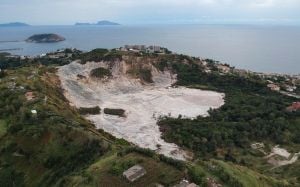Widespread bushfires have emerged across southern Australia, fueled by extreme temperatures and dry lightning storms, creating devastating conditions for local communities and emergency services alike. Fires affecting regions like western Victoria, Tasmania, and South Australia have left a trail of destruction, as temperatures soared to alarming levels.
A heatwave sweeping through the area has made firefighting efforts particularly challenging. According to reports, fires within major national parks—including the Little Desert and Grampians—remain largely out of control. Communities are now grappling with the consequences, as damaging blazes have already claimed several houses, leaving many residents anxious and fearful about their future.
On Sunday evening, thunderstorms rolled through, providing mixed outcomes for firefighting efforts. While some regions received significant rainfall—over 50mm falling in places like Blackwood and the Macedon Ranges—other areas were left dry, resulting instead in lightning strikes and additional fires. For example, the Otways region recorded fires ignited by such lightning events.
The soaring temperatures also contributed to alarmingly high readings, with areas like Horsham, Hopetoun, and Mildura recording temperatures of 43 degrees Celsius. These blistering conditions hinder firefighting teams as they battled blazes triggered by dry lightning earlier in the week.
One local, Fiona Cameron, who lives near the southern edges of the Little Desert, expressed her concerns about the wind direction and its impact on the fires. “We had the initial fires flare up last week then it was relatively calm when the winds were primarily from the south, which pushed the fire back,” she explained. “But on Sunday night, the wind swung to the north-east, creating immediate threats to our neighbors.” Cameron spoke about the significant damage caused to her community. “While people may perceive these fires to be isolated to the desert area, there’s been considerable impact on private property as well.”
Reports highlight the local community's resilience, as many rallied together to combat the fires. Cameron praised the efforts of volunteers and fire crews from across the state, saying, “We’ve had volunteers from all over giving a hand. The aerial water bombing has made a huge difference during this crisis.” These coordinated efforts, along with back burning initiatives, have proved beneficial.
Satellite imagery has vividly showcased the scale of the devastation, with large smoke plumes observed stretching across southeastern Australia. The Bureau of Meteorology indicated over 100,000 cloud-to-ground lightning strikes were detected just between Sunday and Tuesday across Victoria, Tasmania, and South Australia, amplifying concerns on the fire front.
Watch and Act alerts were enforced for numerous fires across Victoria and Tasmania, with additional fires burning at Advice level within South Australia’s Mount Remarkable National Park. These alerts represent serious warnings for communities situated near active fire zones. Experts warn of severe conditions continuing throughout the week, with more elevated temperatures predicted. These patterns are reflective of recent dry weather conditions which have left the region vulnerable to such fires.
January saw parts of southeastern Australia grappling with rainfall totals among the lowest ten percent recorded historically, emphasizing the precarious state of the environment leading us here. Authorities now stress the importance of community preparedness and swift action as the bushfire season continues.
The persistence of hot air masses across the southeastern region has left residents wary of the approaching weather patterns. While the downpour from recently passed storms aided firefighting efforts temporarily, the threat remains high as warmer temperatures are forecasted, putting homes and landscapes at risk once again.
Local leaders and authorities remain vigilant, bolstering response efforts and working on communication strategies. It is imperative, they say, for communities to stay informed and ready to act as conditions are expected to shift again this week.
The heartbreaking nature of bushfires spares no one, igniting distress throughout the community and proving once again the unpredictability of nature. Fires bring irrevocable change to landscapes but also highlight the strength and resilience shared within communities, as residents band together for support during these challenging times.
Residents are encouraged to stay updated and heed local warnings as they prepare to face the realities of continuing bushfire threats, with safety remaining the foremost priority.



